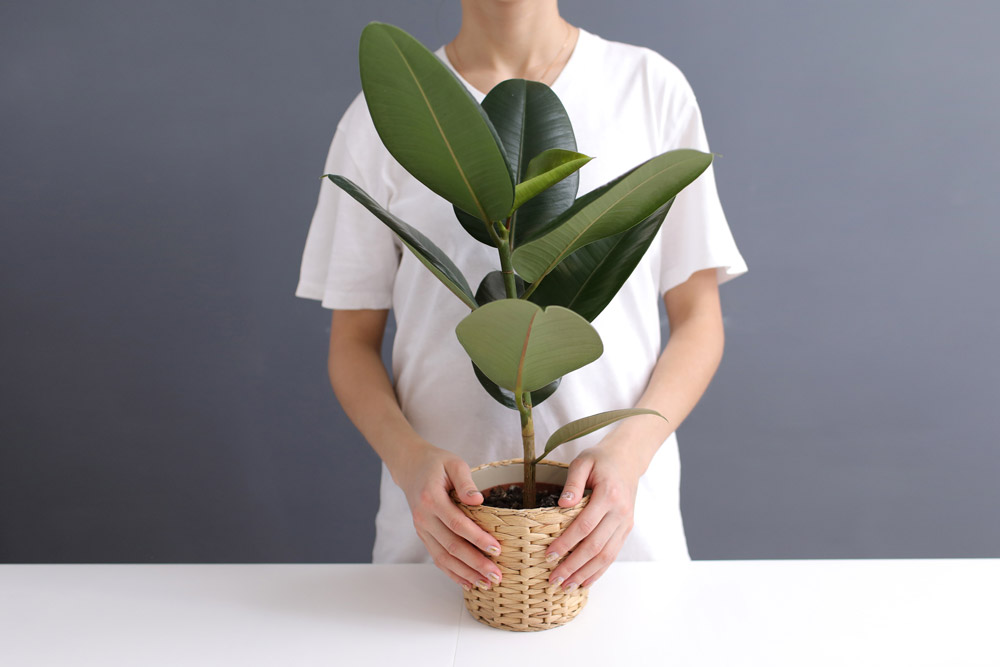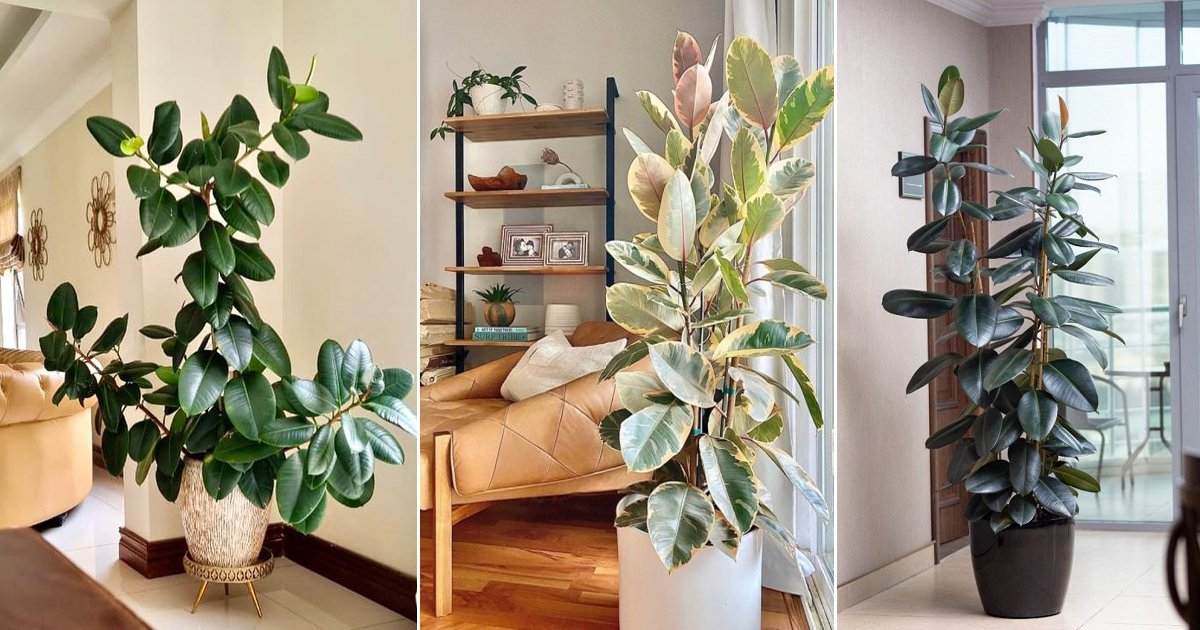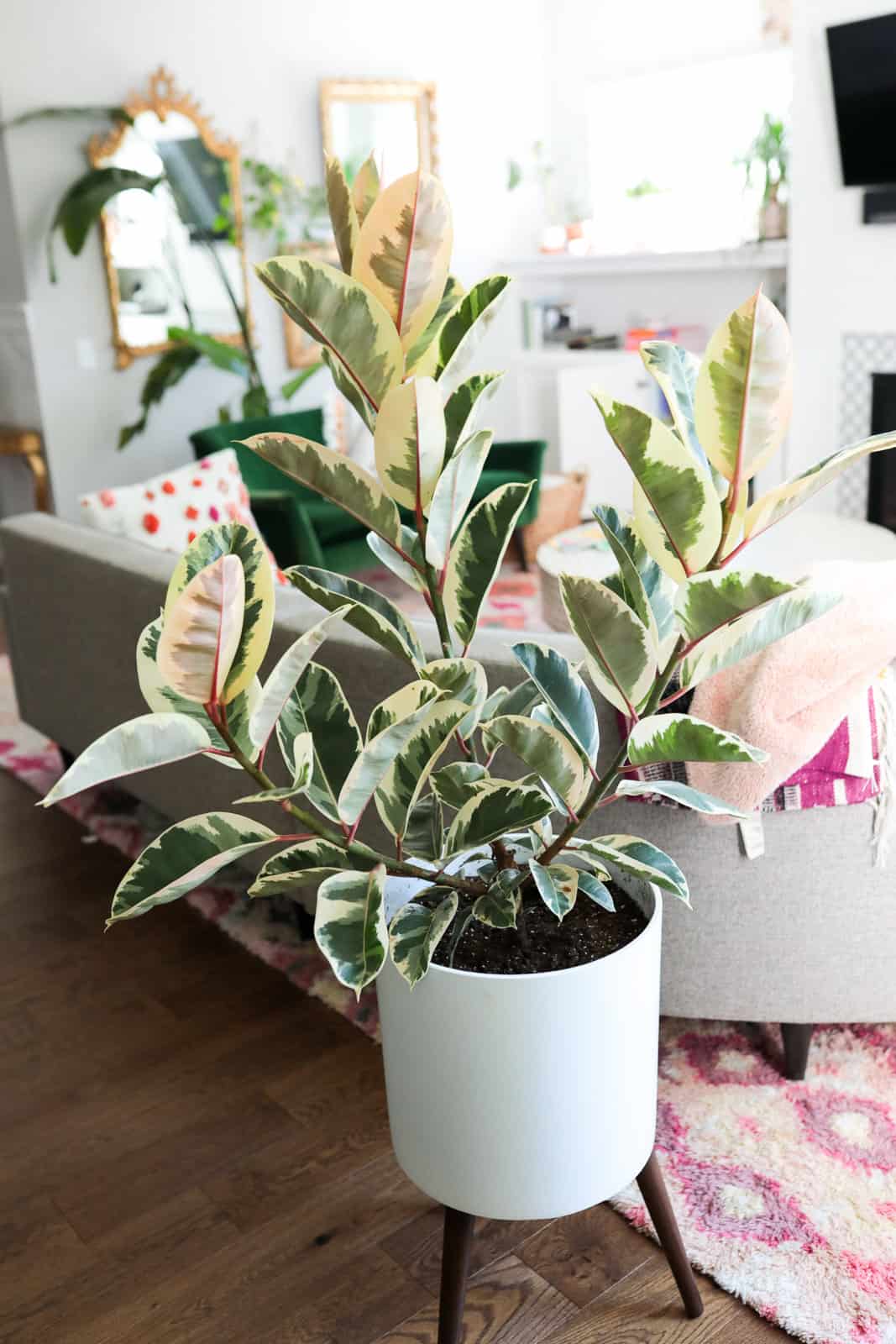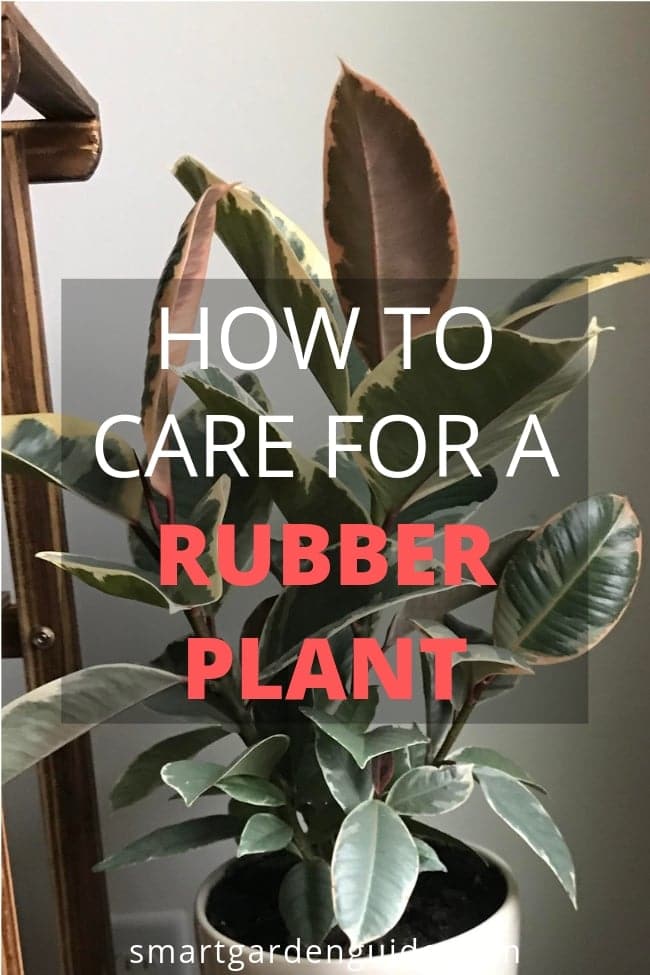The Benefits of Co-Planting Rubber Plants
Co-planting rubber plants can be a great way to enhance the aesthetic appeal of a room while also improving air quality. By growing multiple rubber plants together, you can create a stunning display that adds a touch of tropical elegance to any space. But the benefits of co-planting rubber plants go beyond just visual appeal. When grown together, rubber plants can also help to purify the air more efficiently, removing toxins and pollutants more effectively than a single plant. This is because multiple plants can absorb and process more air at once, creating a healthier environment for occupants.
In addition to improved air quality, co-planting rubber plants can also increase humidity levels in a room. This can be especially beneficial in dry environments, where low humidity can lead to dry skin and respiratory issues. By releasing moisture into the air through transpiration, co-planted rubber plants can help to maintain a healthy humidity level, creating a more comfortable environment for occupants.
Furthermore, co-planting rubber plants can also help to reduce stress and anxiety. Studies have shown that being around plants can have a calming effect on the mind and body, and co-planting rubber plants can amplify this effect. By creating a peaceful and serene environment, co-planted rubber plants can help to reduce stress and anxiety, promoting a sense of well-being and relaxation.
So, can you plant two rubber plants together? Absolutely In fact, co-planting rubber plants is a great way to create a thriving and harmonious plant community. By selecting compatible varieties and providing the right growing conditions, you can create a stunning display that not only looks great but also provides numerous benefits for occupants.
Choosing the Right Rubber Plant Varieties for Co-Planting
When it comes to co-planting rubber plants, selecting the right varieties is crucial for success. Not all rubber plants are created equal, and some varieties are better suited for co-planting than others. To ensure harmonious co-planting, it’s essential to choose varieties that have similar growing conditions, lighting requirements, and watering needs.
Some popular rubber plant varieties that thrive together include the ‘Burgundy’ and ‘Tineke’ varieties. These varieties have similar growing conditions and can tolerate low to medium light, making them ideal for indoor spaces. The ‘Burgundy’ variety has beautiful, dark green leaves with burgundy undertones, while the ‘Tineke’ variety has striking, variegated leaves with shades of green and white.
Another great combination is the ‘Rubra’ and ‘Tricolor’ varieties. These varieties have similar watering needs and can thrive in medium to bright light. The ‘Rubra’ variety has stunning, dark green leaves with red undertones, while the ‘Tricolor’ variety has beautiful, variegated leaves with shades of green, white, and pink.
When selecting varieties for co-planting, it’s also essential to consider the mature size of the plants. Some rubber plant varieties can grow quite large, so it’s crucial to choose varieties that will not overcrowd the pot or compete for resources. By selecting varieties that have similar growing conditions and mature sizes, you can create a harmonious and thriving co-planted rubber plant display.
So, can you plant two rubber plants together? Yes, you can, but it’s essential to choose the right varieties to ensure success. By selecting compatible varieties and providing the right growing conditions, you can create a stunning and thriving co-planted rubber plant display that will bring joy and beauty to any space.
How to Plant Multiple Rubber Plants Together Successfully
Planting multiple rubber plants together can be a bit more challenging than planting a single plant, but with the right steps, you can create a thriving and harmonious co-planted rubber plant display. Here’s a step-by-step guide on how to plant two or more rubber plants together successfully:
Step 1: Choose the Right Pot Size
When planting multiple rubber plants together, it’s essential to choose a pot that is large enough to accommodate the mature size of the plants. A general rule of thumb is to choose a pot that is at least 1-2 sizes larger than the current pot size of the plants. This will give the roots of the plants enough room to grow and prevent overcrowding.
Step 2: Select the Right Soil
Rubber plants prefer well-draining soil that is rich in organic matter. When planting multiple rubber plants together, it’s essential to choose a potting mix that is specifically designed for tropical plants like rubber plants. Avoid using regular potting soil, as it can retain too much water and cause root rot.
Step 3: Plant the Rubber Plants
Once you have chosen the right pot and soil, it’s time to plant the rubber plants. Start by gently removing the plants from their pots and loosening the roots. Then, place the plants in the new pot, making sure to leave enough space between each plant for proper growth and air circulation.
Step 4: Water and Fertilize
After planting the rubber plants, water them thoroughly to settle the soil. Then, fertilize the plants with a balanced fertilizer to promote healthy growth and development.
By following these steps, you can successfully plant multiple rubber plants together and create a thriving and harmonious co-planted rubber plant display. Remember to choose the right pot size, select the right soil, plant the rubber plants correctly, and water and fertilize them properly to ensure optimal growth and health.
So, can you plant two rubber plants together? Yes, you can, and with the right steps, you can create a stunning and thriving co-planted rubber plant display that will bring joy and beauty to any space.
Optimizing Growing Conditions for Co-Planted Rubber Plants
Providing the right environment for co-planted rubber plants is crucial for their health and well-being. Rubber plants prefer bright, indirect light, but can tolerate low light conditions. When co-planting rubber plants, it’s essential to ensure that each plant receives the right amount of light. Placing the plants near an east- or west-facing window is ideal, as this will provide them with gentle, indirect light.
Temperature is also an important factor to consider when co-planting rubber plants. Rubber plants prefer temperatures between 65-75°F (18-24°C), which is typical for most indoor spaces. Avoid placing the plants near heating or cooling vents, fireplaces, or drafty windows, as this can cause temperature fluctuations that can stress the plants.
Humidity is another critical factor to consider when co-planting rubber plants. Rubber plants prefer a humid environment, typically between 50-70% relative humidity. To maintain optimal humidity levels, you can place the plants on a tray filled with water and pebbles or use a humidifier nearby.
Watering is also crucial when co-planting rubber plants. Overwatering can lead to root rot, while underwatering can cause the leaves to drop. Check the soil moisture by sticking your finger into the soil up to the first knuckle. If the soil feels dry, it’s time to water. Water the plants thoroughly, allowing excess water to drain from the pot.
By providing the right environment for co-planted rubber plants, you can ensure they thrive and grow well together. Remember to monitor the plants’ responses to their environment and adjust as needed. With proper care and attention, co-planted rubber plants can bring joy and beauty to any space.
So, can you plant two rubber plants together? Yes, you can, and with the right growing conditions, they can thrive and grow well together. By following these tips, you can create a stunning and harmonious co-planted rubber plant display that will bring joy and beauty to any space.
Potting Mix and Fertilization for Co-Planted Rubber Plants
Using a well-draining potting mix and balanced fertilization is crucial for the health and well-being of co-planted rubber plants. A well-draining potting mix will help prevent waterlogged soil and root rot, while balanced fertilization will provide the necessary nutrients for healthy growth and development.
When selecting a potting mix for co-planted rubber plants, look for a mix that is specifically designed for tropical plants like rubber plants. These mixes typically contain a blend of peat moss, perlite, and vermiculite, which will help retain moisture and provide good drainage.
Some popular potting mixes for co-planted rubber plants include:
- Miracle-Gro Tropical Potting Mix
- Black Kow All Purpose Potting Mix
- Pro-Mix Tropical Plant Mix
In addition to using a well-draining potting mix, balanced fertilization is also essential for co-planted rubber plants. A balanced fertilizer will provide the necessary nutrients for healthy growth and development, including nitrogen, phosphorus, and potassium.
Some popular fertilizers for co-planted rubber plants include:
- Miracle-Gro Shake ‘n Feed All Purpose Plant Food
- Scotts Osmocote 14-14-14 Professional Plant Food
- Dyna-Gro Foliage-Pro 9-3-6 Plant Food
When fertilizing co-planted rubber plants, it’s essential to follow the instructions on the label and avoid overfertilizing. Overfertilizing can cause more harm than good, leading to burned roots and stunted growth.
By using a well-draining potting mix and balanced fertilization, you can provide your co-planted rubber plants with the necessary nutrients for healthy growth and development. Remember to monitor the plants’ responses to their environment and adjust as needed. With proper care and attention, co-planted rubber plants can thrive and bring joy and beauty to any space.
Pest Control and Disease Prevention for Co-Planted Rubber Plants
Co-planted rubber plants can be susceptible to pests and diseases, which can spread quickly from one plant to another. To prevent infestations and maintain healthy plants, it’s essential to monitor your co-planted rubber plants regularly and take action at the first sign of trouble.
Common pests that can affect co-planted rubber plants include spider mites, mealybugs, and scale. These pests can cause damage to the leaves and stems of the plants, and can also spread disease. To prevent infestations, make sure to inspect your plants regularly and treat any infestations promptly.
Spider mites are tiny, spider-like insects that can cause yellowing or bronzing of the leaves. To control spider mites, use a gentle insecticidal soap or neem oil. Mealybugs are small, white insects that can cause stunted growth and yellowing of the leaves. To control mealybugs, use a systemic insecticide or insecticidal soap. Scale is a type of insect that can cause stunted growth and yellowing of the leaves. To control scale, use a systemic insecticide or insecticidal soap.
Diseases that can affect co-planted rubber plants include root rot, leaf spot, and crown rot. These diseases can be caused by overwatering, underwatering, or poor air circulation. To prevent diseases, make sure to provide your co-planted rubber plants with good air circulation, avoid overwatering, and treat any diseases promptly.
Root rot is a common disease that can affect co-planted rubber plants. It is caused by overwatering and can cause the roots of the plants to rot. To prevent root rot, make sure to avoid overwatering and provide good air circulation. Leaf spot is a disease that can cause yellowing or blackening of the leaves. To control leaf spot, use a fungicide and remove any infected leaves. Crown rot is a disease that can cause the crown of the plant to rot. To control crown rot, use a fungicide and remove any infected tissue.
By monitoring your co-planted rubber plants regularly and taking action at the first sign of trouble, you can prevent infestations and maintain healthy plants. Remember to provide your plants with good air circulation, avoid overwatering, and treat any diseases promptly.
Pruning and Training Co-Planted Rubber Plants
Pruning and training co-planted rubber plants is essential to maintain their shape, promote healthy growth, and encourage air circulation. Pruning helps to remove dead or damaged leaves and stems, while training helps to control the plant’s growth and promote a desired shape.
When pruning co-planted rubber plants, it’s essential to use clean and sharp tools to prevent spreading diseases. Remove any dead or damaged leaves and stems, and cut back any overgrown branches to maintain the plant’s shape. Prune the plants in the spring or summer when they are actively growing, and avoid pruning in the fall or winter when the plants are dormant.
Training co-planted rubber plants involves providing support for the plants as they grow. Use stakes or trellises to support the plants and keep them upright, and prune the plants regularly to maintain their shape. Training also helps to promote air circulation around the plants, which can help to prevent diseases.
Some popular pruning and training techniques for co-planted rubber plants include:
- Pinching: Pinch off the tips of the stems to encourage branching and promote a fuller plant.
- Pruning: Prune the plants regularly to maintain their shape and promote healthy growth.
- Staking: Use stakes to support the plants and keep them upright.
- Trellising: Use trellises to provide support for the plants and promote vertical growth.
By pruning and training co-planted rubber plants, you can maintain their shape, promote healthy growth, and encourage air circulation. Remember to prune and train the plants regularly to keep them looking their best.
So, can you plant two rubber plants together? Yes, you can, and with proper pruning and training, they can thrive and grow well together. By following these tips, you can create a stunning and harmonious co-planted rubber plant display that will bring joy and beauty to any space.
Troubleshooting Common Issues with Co-Planted Rubber Plants
When growing multiple rubber plants together, it’s not uncommon to encounter some common issues. Here are some troubleshooting tips and solutions to help you overcome these challenges:
Uneven Growth: If one plant is growing faster than the others, it may be due to uneven light distribution or watering. To solve this issue, make sure to provide equal light and water to all plants, and consider pruning the faster-growing plant to maintain a balanced shape.
Leaf Drop: Leaf drop can be caused by overwatering, underwatering, or sudden changes in temperature or humidity. To prevent leaf drop, make sure to water your plants correctly, and maintain a consistent temperature and humidity level.
Pest Infestations: Pest infestations can be a common issue when growing multiple rubber plants together. To prevent pest infestations, make sure to inspect your plants regularly, and treat any infestations promptly.
Root Bound: If your plants are becoming root-bound, it may be due to a pot that is too small. To solve this issue, consider transplanting your plants into a larger pot with fresh soil.
Yellowing Leaves: Yellowing leaves can be caused by overwatering, underwatering, or nutrient deficiencies. To prevent yellowing leaves, make sure to water your plants correctly, and provide them with a balanced fertilizer.
By following these troubleshooting tips and solutions, you can overcome common issues that may arise when growing multiple rubber plants together. Remember to monitor your plants regularly, and take action promptly if you notice any problems.
So, can you plant two rubber plants together? Yes, you can, and with proper care and attention, they can thrive and grow well together. By following these tips and solutions, you can create a stunning and harmonious co-planted rubber plant display that will bring joy and beauty to any space.








